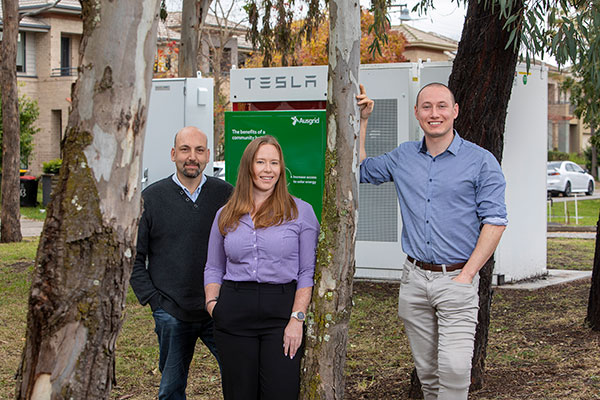Canterbury-Bankstown has the largest local government resident population in NSW, and one of the most diverse. With nearly 355,000 people speaking more than 120 different languages, the city has a unique, cosmopolitan environment.
The City of Canterbury Bankstown is tackling climate change head, on behalf of its residents, on with an ambitious target of Net Zero council emissions by 2050.
To achieve this goal, the southwest Sydney council is helping residents to improve their energy efficiency and transition to solar power with the help of the Australian Energy Foundation (AEF).
About half of the municipality’s carbon emissions from electricity are produced by households, says the Council’s Environmental Projects Officer — Sustainability, Lawrence Kurdi, making residential solar power “the single largest way of reducing emissions in this area”.
Renewable energy uptake in Canterbury Bankstown is already significant with solar panels installed in approximately 12% of homes, but with room for improvement. Council has the remaining 88% firmly in its sights, deploying a raft of measures to change perceptions around solar power and increase access to green power for all residents.
Technological advances, lower prices and interest-free financing have removed most of the obstacles that have traditionally impeded solar power uptake, Lawrence says. Today, the greatest barrier is the sheer difficulty of sifting through a bewildering amount of information, he says.
Lawrence’s colleague at the Council, Environmental Sustainability Education Officer Tarah Slattery is proactively “breaking down that knowledge barrier,” hosting Solar and Battery workshops in partnership with the AEF.
These events help residents accurately assess their energy needs to choose the right solar system and connect them to trusted solar providers.
“We’ve taken the work out of navigating what can be, oftentimes, a confusing experience,” explains AEF’s Gus Taylor.
“Our suppliers have to have a proven track record of quality customer service end-to-end. They must be fully accredited and have a legacy of stability that we know residents will be able to rely on.
Gus says partnering with local councils has been successful on a community and personal level.
Listening to people’s positive experiences with the program “warms me on a daily basis”, he says.
“The testimonials are great,” he says, because “there are a lot of dirty sales tactics and people trying to peddle things that aren’t suited to [residents’] needs at all.
“When they’ve had the complete reverse of that experience with us, I think it’s just really reassuring that someone out there is looking after them.”
Battery storage adds a new complication to home solar set-ups and is unaffordable for many residents, Lawrence says. One way to overcome that barrier is to provide larger batteries that can serve an entire neighbourhood. Council is exploring that option with the Bankstown Community Battery, a three-year trial in partnership with Ausgrid.
The community battery helps to stabilise the electricity grid while allowing trial participants to store excess power generated during the day so they can draw on it at night, when energy is more expensive. Economies of scale make it “much more efficient to do than buy your own battery,” Lawrence says.
“Potentially, they can actually be getting money back from the energy that they are putting into the grid,” Tarah adds.
In the meantime, for those who can’t yet access renewable energy, there are many simple ways to join the Net Zero journey and reduce your bills, Lawrence says.
He suggests starting with a good look around your home. “Every little blinking red LED is an appliance drawing power,” he says, as are all the transformers plugged into sockets.
Astonishingly, “the little clock on your microwave draws more power over the year than the actual microwave.” Turn it off, and you’ll halve your microwave’s energy consumption, he advises.
Coming into summer it’s all about “efficiency, efficiency, efficiency,” Lawrence says.
“If you have blinds, close them. Choose fans before air conditioning.”
“Then, after you’ve done all that, consider renewable energy.”
What is Zero In?
Zero In is sharing stories and getting to know the human face of sustainability in NSW – the people who are leading us to a sustainable, net zero future.
We all have a role to play in building a thriving, healthy and prosperous future. Together we can support our champions, and learn from their stories of action and change.
